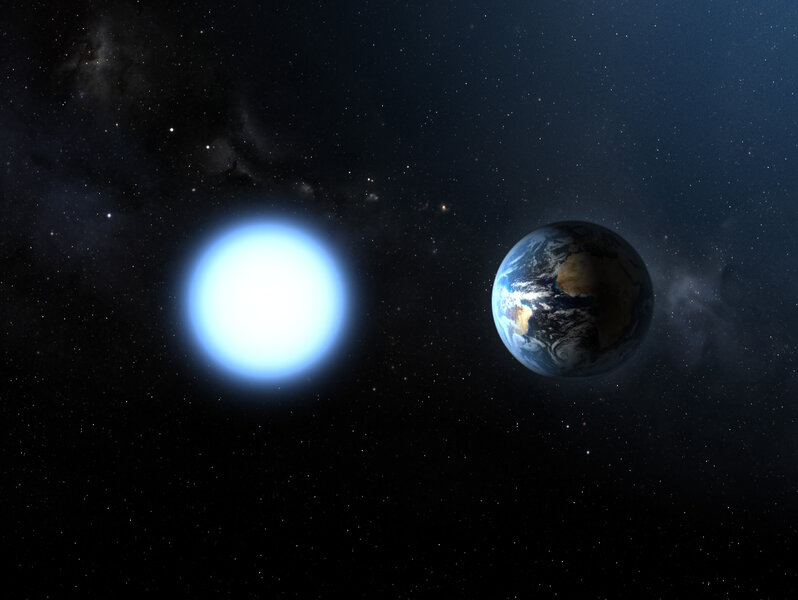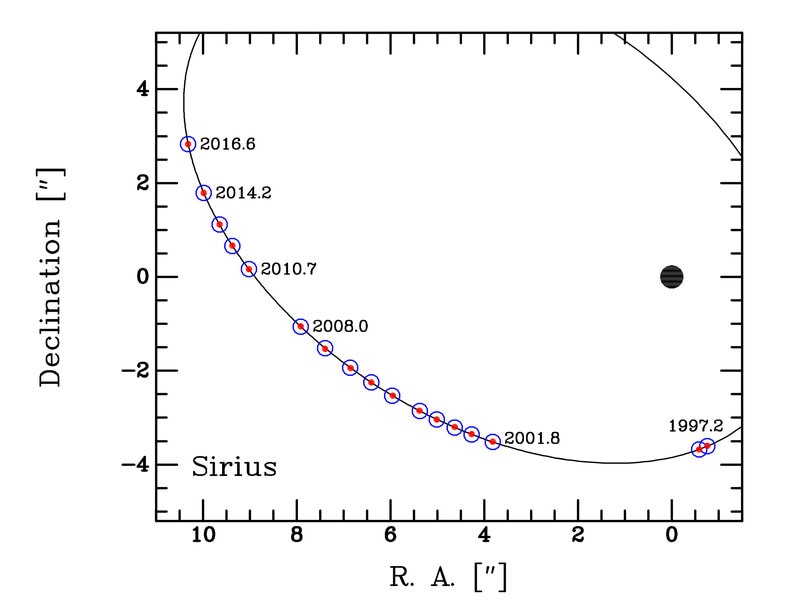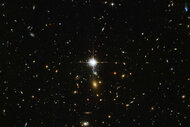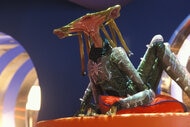Create a free profile to get unlimited access to exclusive videos, sweepstakes, and more!
Why so Sirius?
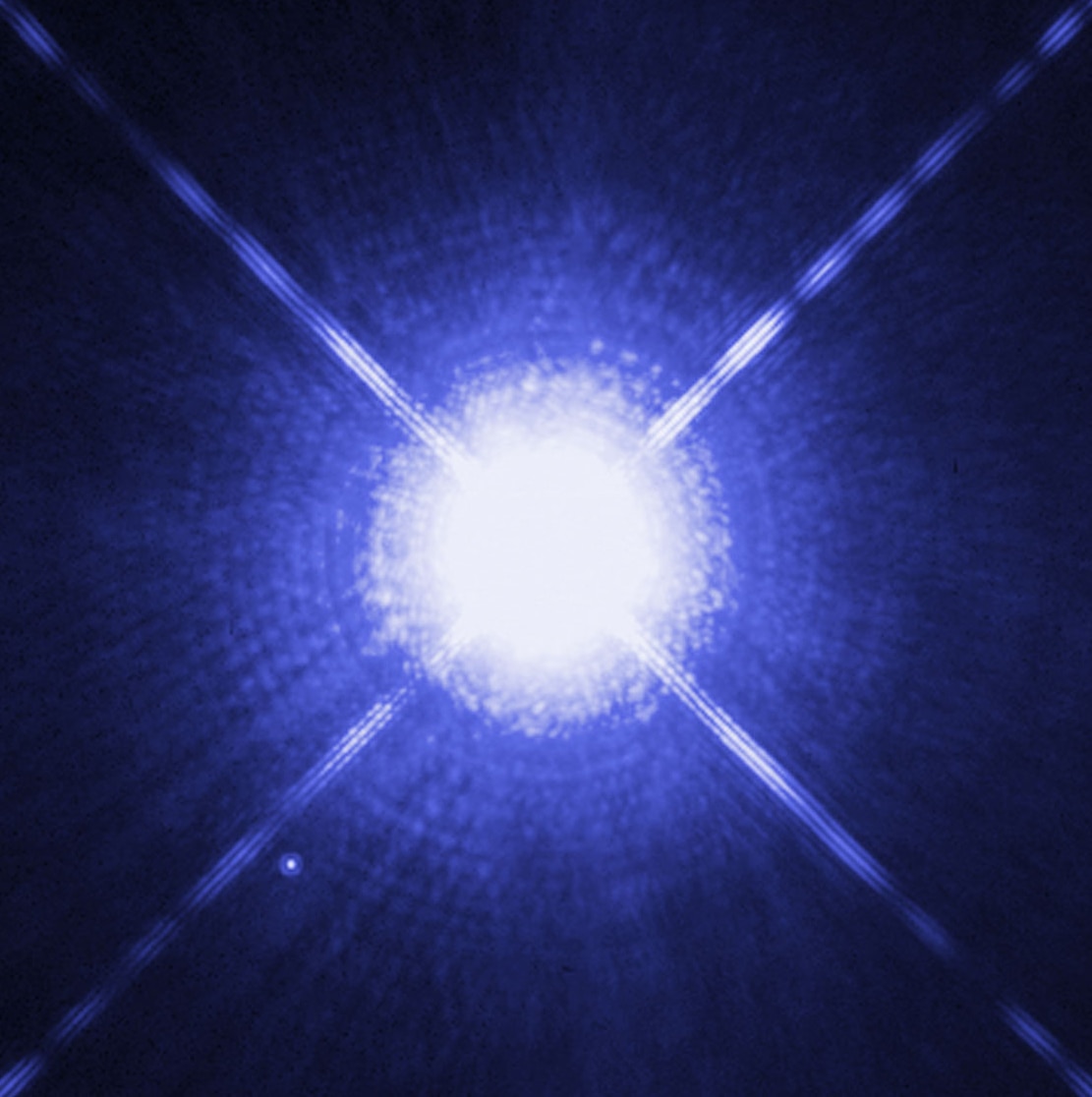
In the winter months, when Orion rises high in the sky, a brilliant star shines just to the southeast of him. Even if the three stars in Orion’s belt didn’t coincidentally point almost right at it, you’d notice it. After all, Sirius is the brightest star in the night sky.
The apparently brightest star, I should pedantically add. Some of that is due to its intrinsic luminosity (it emits about 25 times as much energy as the sun does), but even more important, it’s close: At a distance of 8.6 light years it’s the seventh closest star system to the sun.
And yes, it is a system. A binary, to be clear; a pair of stars orbiting each other. The star we see with our eyes is called Sirius A. The companion, Sirius B, is a white dwarf, the small and dense core of what used to be a normal star, but ran out of nuclear fuel and blew off its outer layers. It’s very faint in visible light, roughly one ten-thousandth the brightness of A. That makes it relatively difficult to see, and it was only discovered in 1862. Its existence was suspected before that; careful measurements even back then showed Sirius appeared to wobble a teeny tiny amount in the sky. It turns out that was due to the gravity of Sirius B tugging on A as they orbit each other.
In the 150-plus years since then, we’ve learned a lot about the pair, but what I find interesting is that precise measurements have been maddeningly elusive. Sirius A is so much brighter than B that even measuring their separation from each other has proven difficult. Any photograph where B is exposed well overexposes A to the point of uselessness.
Difficult, but not impossible. A team of astronomers led by my old friend and colleague Howard Bond has been studying Sirius for quite some time. They’ve been observing Sirius using Hubble Space Telescope for nearly 20 years to get precise measurements of the positions of the two stars as they orbit each other. They coupled that with measurements from the U.S. Naval Observatory going back to 1956 … and not only that, they actually used observations from as far back as 1862!
With all this information, they have finally been able to piece together a coherent picture of the two stars, how they orbit each other, what their physical characteristics are, and perhaps most interestingly what their history is.
Physically, they find that Sirius A has 2.06 times the mass of the sun, and the white dwarf Sirius B has a mass of 1.018 solar masses. All fine and good, but it’s the stars’ sizes that are amazing. They find Sirius A has a diameter that's 1.7144 times the sun — more massive stars are bigger, so that makes sense — but Sirius B has a diameter of just 0.008098 of the sun’s! That makes it about 11,270 kilometers wide: Smaller than the Earth!
That’s a dense star. A cubic centimeter of it (the size of six-sided die) would have a mass of 2.7 metric tons. Imagine taking a fully loaded pickup truck and crushing it down to the size of a sugar cube and you’ll get the picture. Now, to be fair, we’ve known this for decades, but these new measurements are the most accurate ever made. They’ll help us understand the physics of stars better than we ever have.
In fact, these accurate measurements of the masses, sizes, colors, and chemical content of the stars allowed the astronomers to use physical models to calculate the ages of the stars. Sirius A comes out to be about 237 – 247 million years old, while Sirius B is 228 million years old. The uncertainties in both measurements are large enough (10 million years or so) that these estimates are consistent with each other, as expected. We can assume they were born together.
The orbit of the two stars is interesting, too. They revolve around each other every 50.1284 years, ranging from 1.2 billion to 4.7 billion kilometers apart on what’s obviously a highly elliptical orbit. The last time they were closest together (what’s called periastron) was in mid-1994. They’re now about as far apart as they ever get.
And that part leads to something very interesting indeed! Sirius B is the burned-out core of a star that was once much like the sun, though more massive. It likely started out life as a 5.6 solar mass star, putting it in the top tiers of “normal” stars. Something like 130 million years ago it ran out of useable hydrogen in its core to fuse into helium. It swelled up into a red giant, blew off its outer layers, and eventually all that was left was its dense inert core — the white dwarf we see today.
But that red giant stage leads us to a mystery. At that mass, Sirius B would’ve swollen up a lot. It could have been 450 - 500 million kilometers across — three times wider than the Earth’s distance to the sun! But that’s weird: Back then, the periastron distance between Sirius A and B would’ve been less than Sirius B’s radius. In other words, when Sirius B got all swollen, Sirius A would’ve been inside it!
These kinds of stars have been seen before; we call them contact binaries. Usually it’s two stars that share a single, peanut-shaped atmosphere, but in this case A really would’ve been inside of B*. This is technically called the common envelope phase of a close binary system. But it has ramifications. For example, if the two stars start off with an elliptical orbit, this phase will circularize it fast. Yet now, the orbit of the two stars is highly elongated. That’s odd. In fact other binary systems have been seen like this, and it’s not at all clear why or how the orbits remain elliptical after the common envelope phase.
I love this, to be honest. How many times have I seen Sirius, with my own eyes, through binoculars, through a telescope? Hundreds? Thousands, surely. Yet, despite being the brightest star in the night sky, despite being so close, despite tens of thousands of hours of observations of Sirius across the world and throughout history, mysteries still remain about it. About them.
Oh, science. I can never tire of you, because there is always more to know. Always.
* Come to think of it, we name the brighter star of a binary A and the dimmer one B. Back then. B would’ve been A, and A would’ve been B. But this was long before humans strode the Earth and built telescopes. Also, those stars would’ve been on the other side of the galaxy from us back then. Time changes things.

